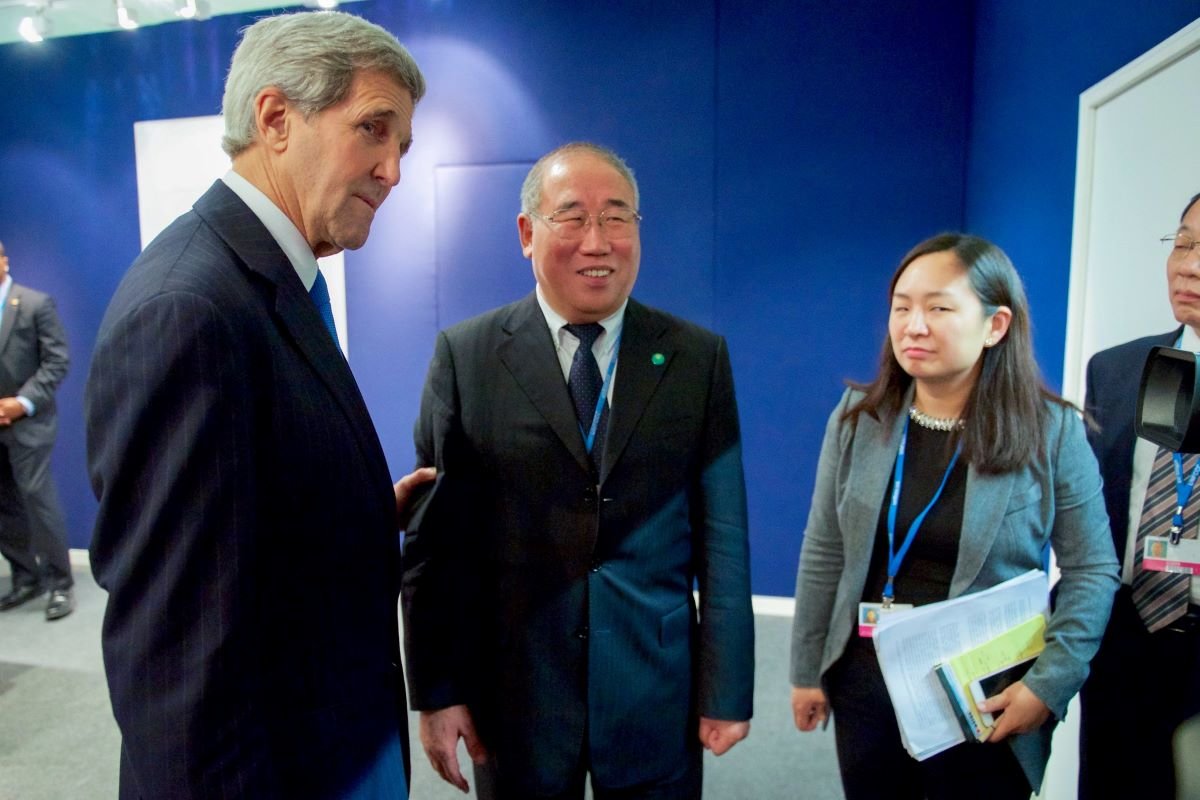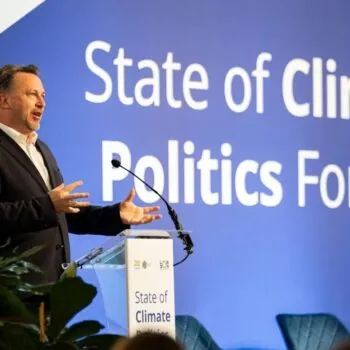After a meeting between US Climate Envoy John Kerry and China Special Envoy for Climate Change Xie Zhenhua, the US and China issued a joint statement addressing the climate crisis. While no new climate targets were announced, there are a slew of commitments giving hope for a new dawn on the climate diplomacy horizon.
The US-China meeting in Shanghai on 15-16 April offered a significant milestone on the road to the UN’s COP26 climate conference in Glasgow later this year. Despite a lack of new climate commitments or agreement on a formal bilateral climate working group, the joint statement offers a clear signal that the great powers are willing to work together. Both on advancing global climate action and smoothing bilateral relations.
The joint statement forms a basis for the world’s two biggest emitters to work together on climate change and their approach to climate diplomacy. This includes contentious issues to be settled in Glasgow, such as details on increasing transparency on tracking countries’ climate progress and the establishment of an international carbon market in the Paris Agreement rulebook. More importantly, the two will need to agree on the financial support to developing countries to reduce emissions and adapt to climate change.
The emphasis on financing the energy transition in developing countries is particularly significant for Beijing. So is the glaring absence of language regarding common but differentiated responsibility on climate. This is a divergence from China’s position on climate finance in discussions with Europe and its developing countries counterparts.
Beijing normally uses such occasions to hit back at the lack of support from developed countries on climate mitigation and adaptation. This sets the stage for China to make greater contributions to climate finance, potentially through its South-South climate cooperation mechanism. It also casts China in a more positive role for climate finance discussions for COP26.
The pledge to raise support for developing countries to move away from “carbon-intensive fossil fuel-based energy” hints at China’s intention to stop financing coal projects abroad. The US already committed to ending fossil fuel finance overseas. Major coal project financiers Japan and South Korea are expected to make similar pledges in the coming weeks. The pressure is now on China to revisit its Belt and Road coal financing strategy ahead of the Glasgow climate summit.
Promising to take additional climate action in the “short term” is China’s first public recognition that 2021 is a critical climate moment. All countries, including China, must ratchet up their climate ambition. The new attitude is a clear departure from Beijing’s earlier assertions that its climate policies already reflect the “highest possible ambition.” A stance it took just a week ago with a group of major developing countries.
While both sides reaffirmed their willingness to “pursue efforts to limit [temperature increase] to 1.5 °C” in alignment with the Paris Agreement, the joint statement included ambiguous framing of near-term policies. This perhaps indicates Beijing is not quite ready to make a firm commitment to align its domestic policies with a 1.5 °C goal. To bring it in line with Paris ambition, however, China needs to peak its emissions before 2025. Its current target to peak by 2030 is not enough.
Beijing stopped short of making new climate commitments to avoid the optics of caving to US diplomatic pressure. However, when it comes to climate ambition, the US successfully managed to get China to speak the same language. This includes defining climate change as a “climate crisis”, a characterisation never used before in Chinese official documents. Although President Xi hasn’t confirmed his attendance at the Leaders Summit on Climate, Mr Kerry’s team convinced China to “share the summit’s goal” of keeping the 1.5 °C target within reach.
After tense opening exchanges on climate, particularly notable at the Alaska meeting in March, the new joint Shanghai statement takes the rhetorical heat out of US-China climate relations. It paves the way for practical bilateral engagement on climate, along with greater US-China coordination at the UN COP26 climate negotiations and other key multilateral venues such as the G20.
This is the beginning of a recalibration by the world’s two biggest emitters on their approach to climate diplomacy. The statement offers an approach that leverages international frameworks so that the US and China can bypass bilateral tensions.
The world will now be eager to see whether this approach can be extended to other vital decisions in 2021. For example, on tackling the pandemic, post-COVID-19 recovery, and debt restructuring in developing countries. Let’s hope that time proves this approach correct.



